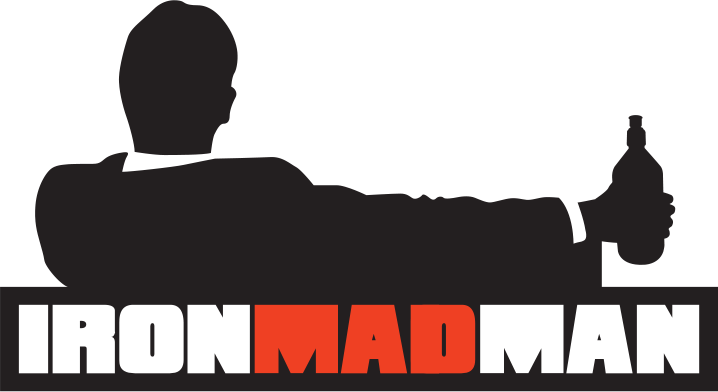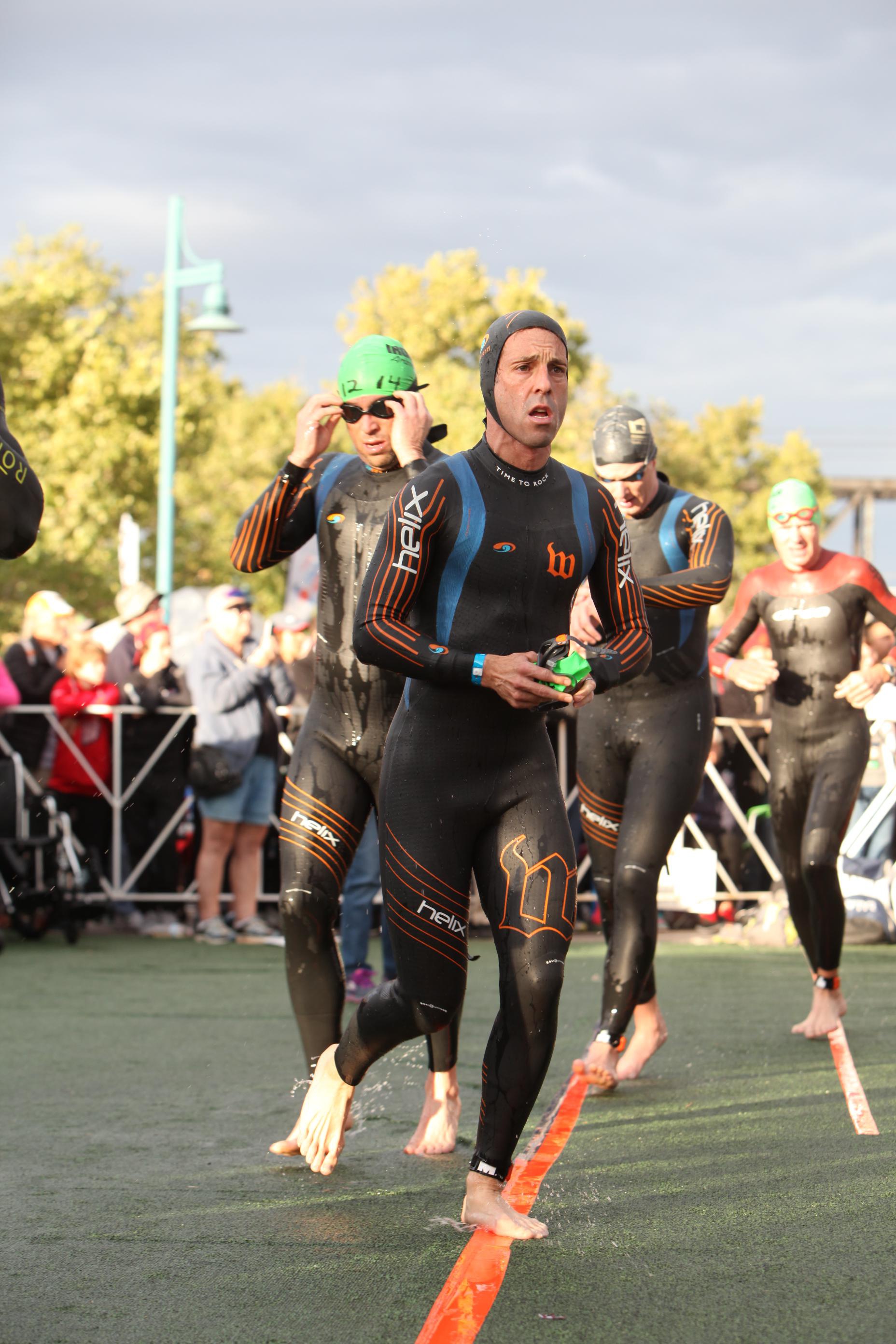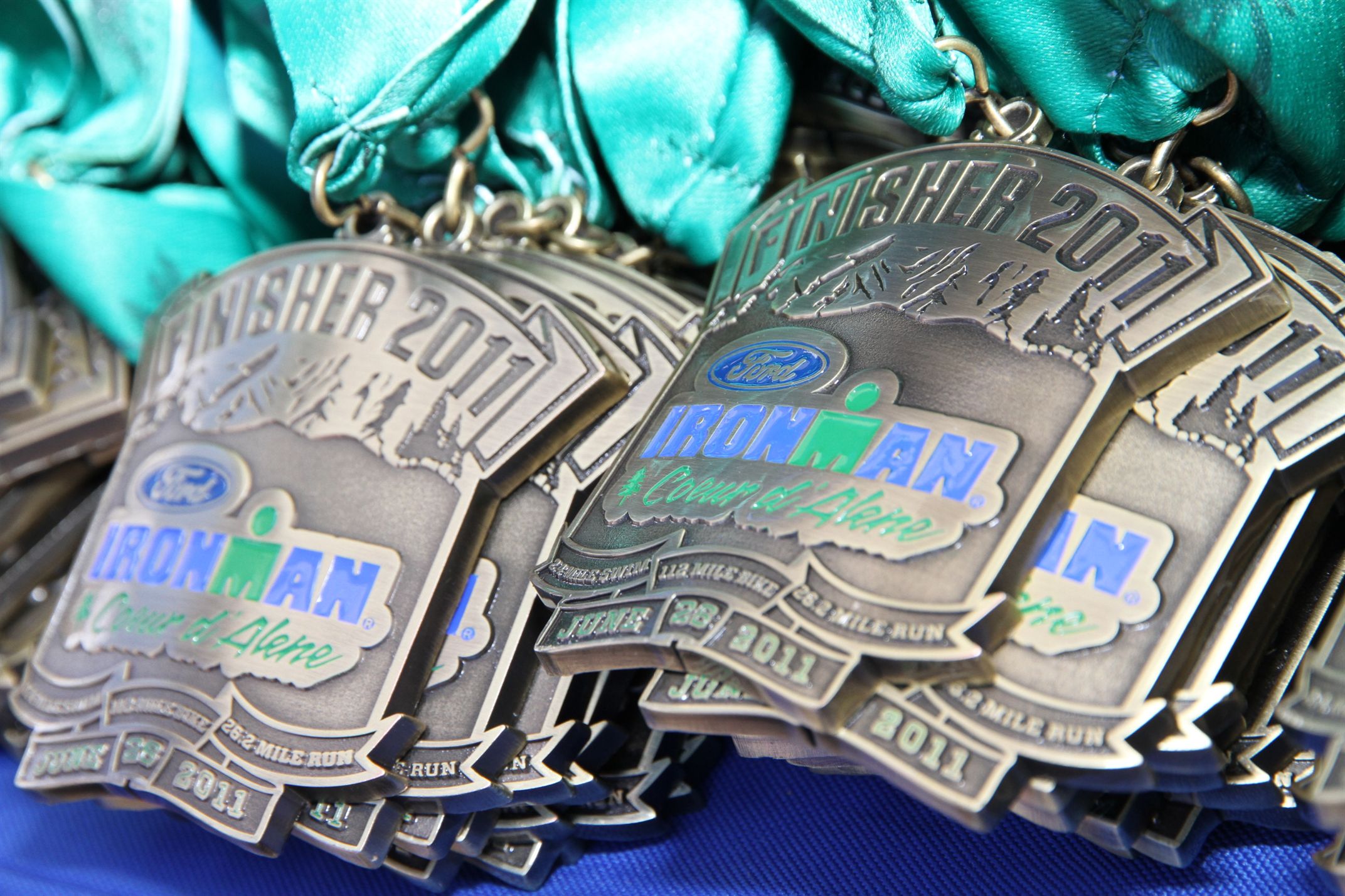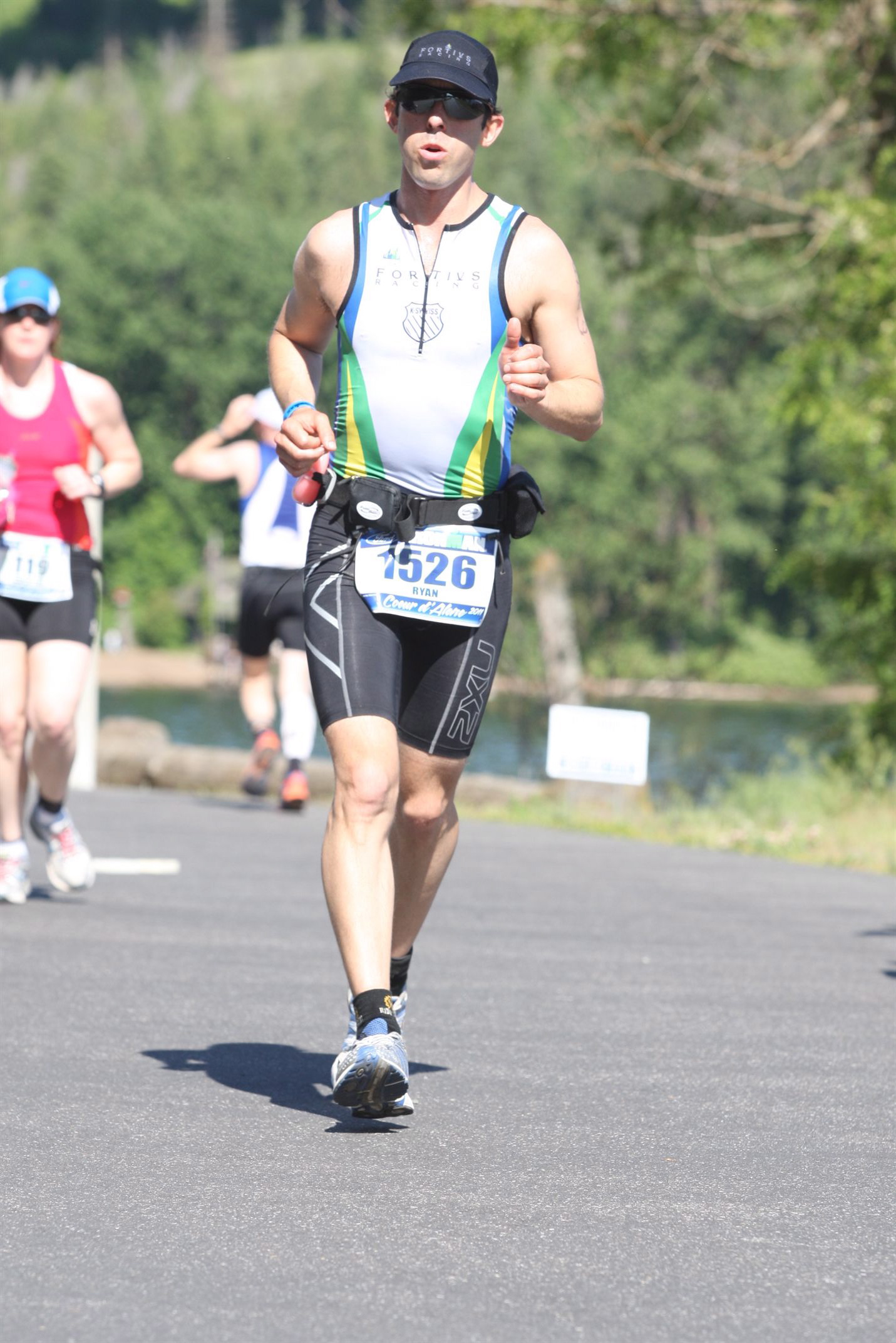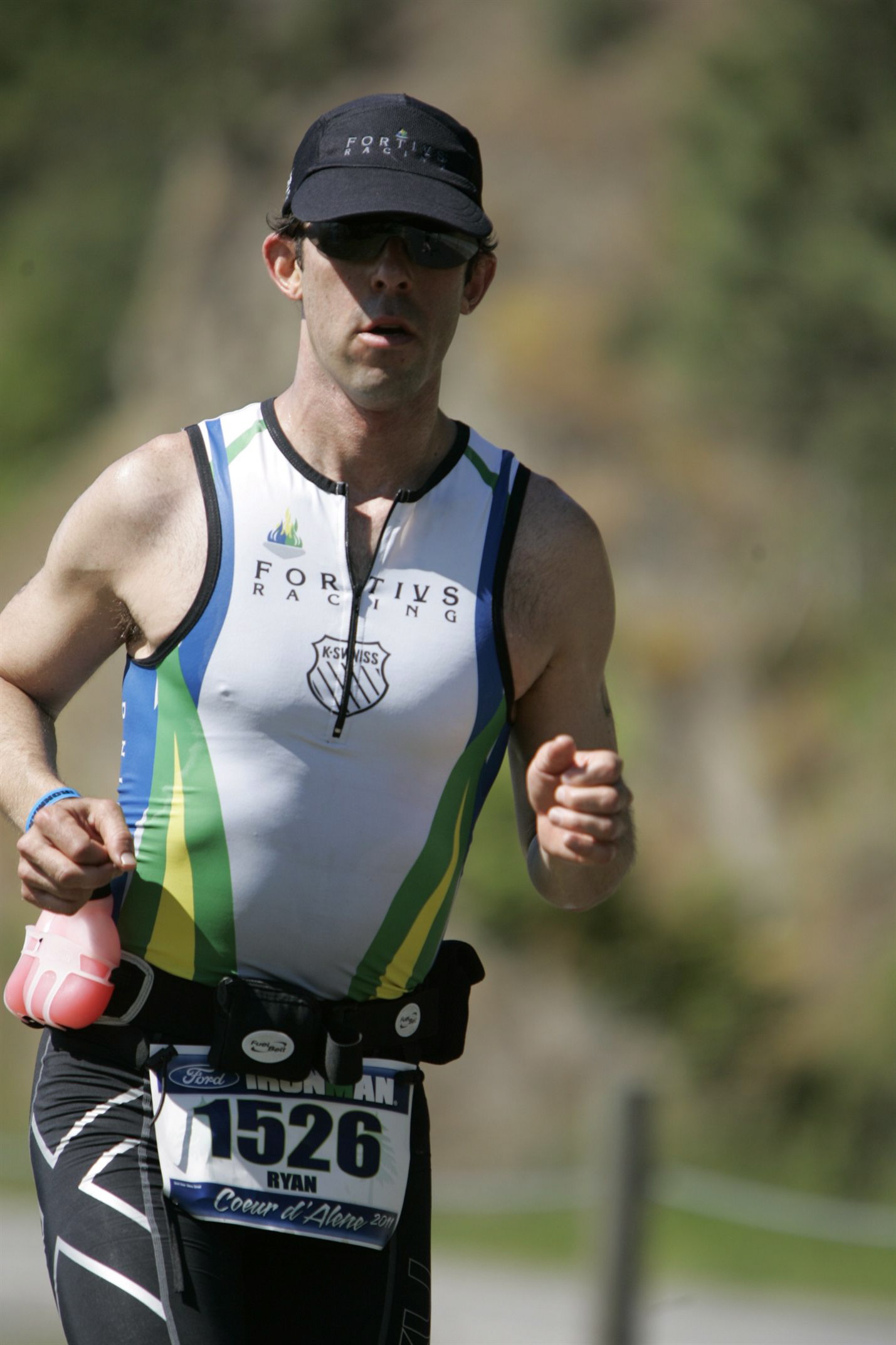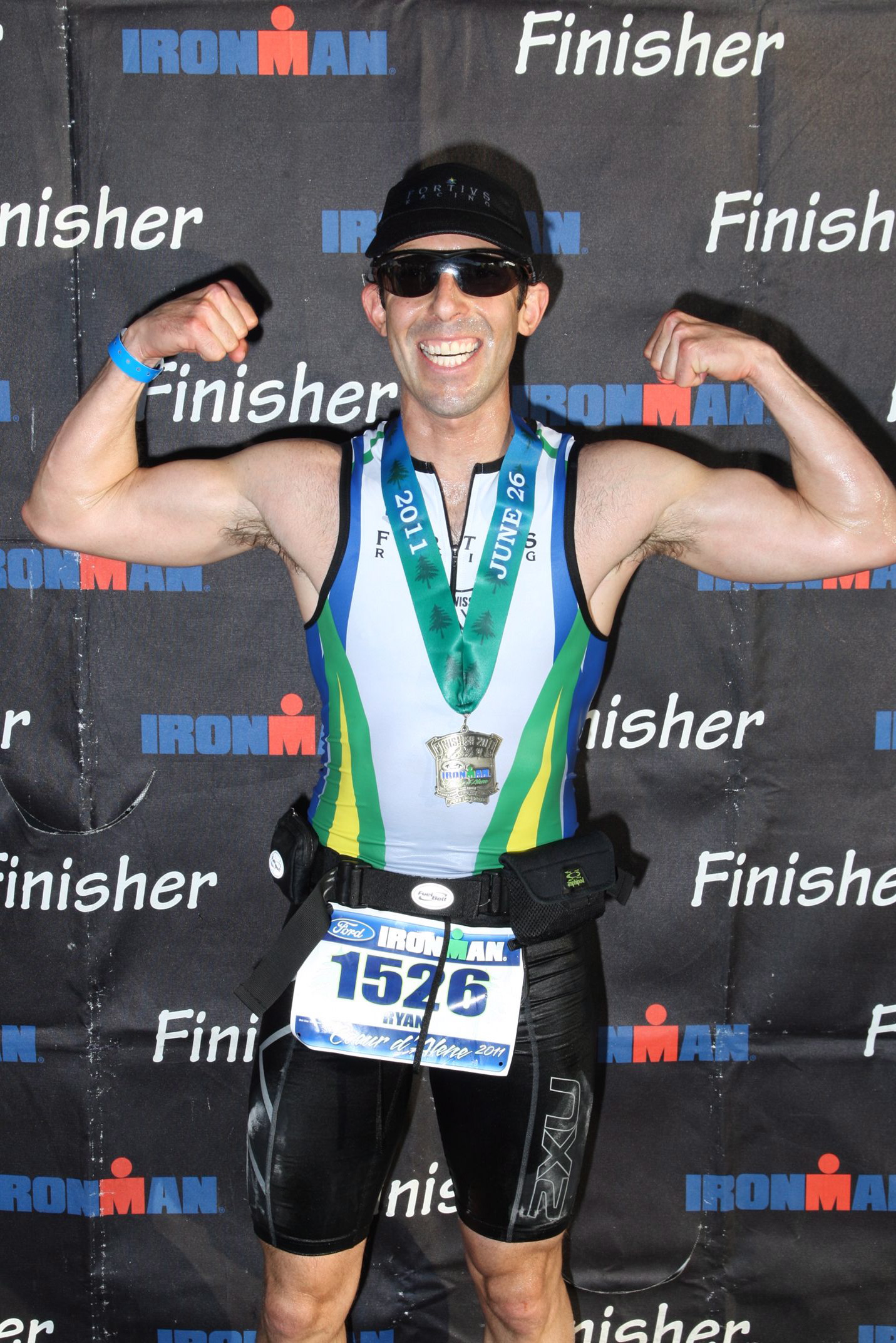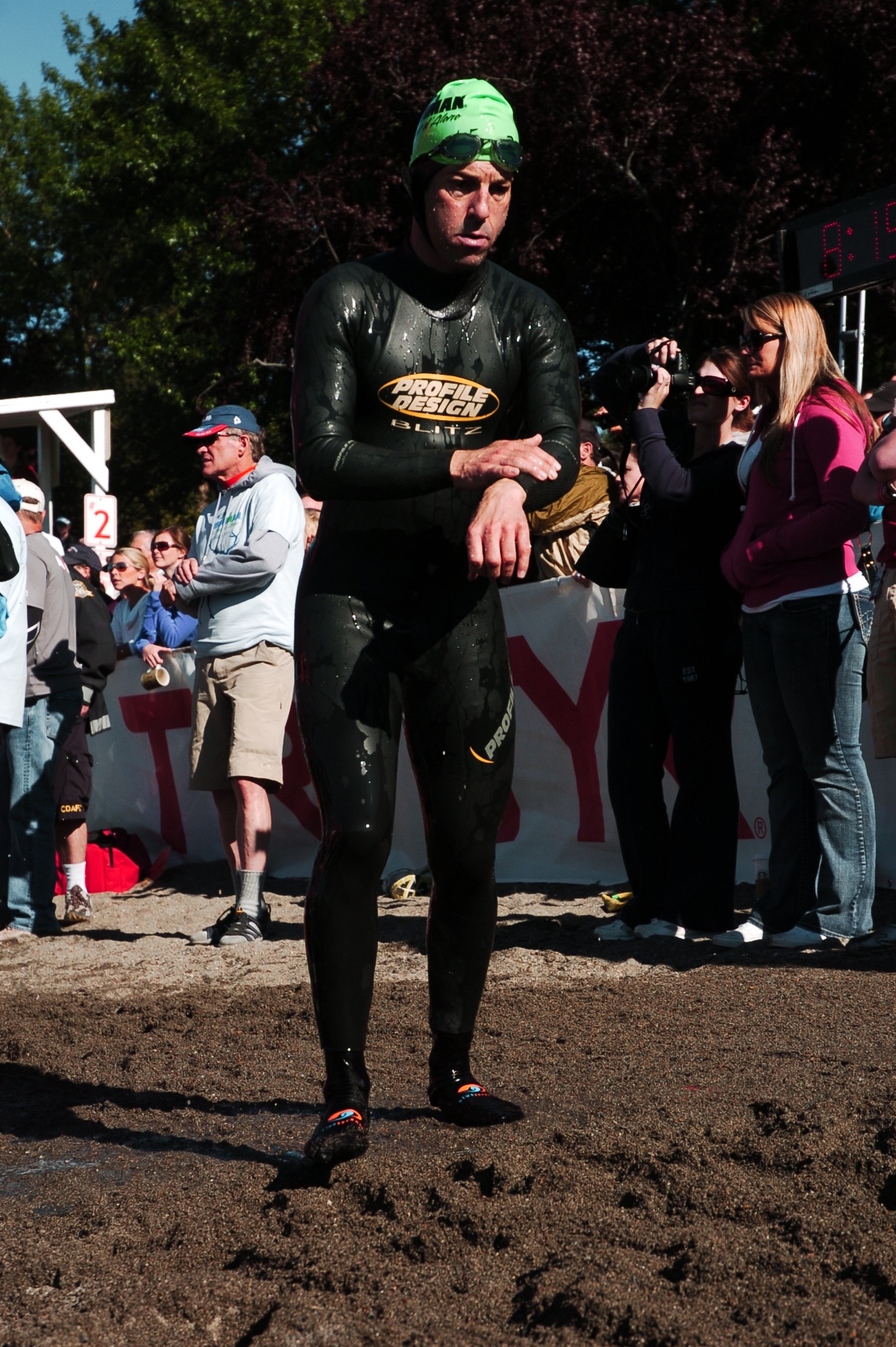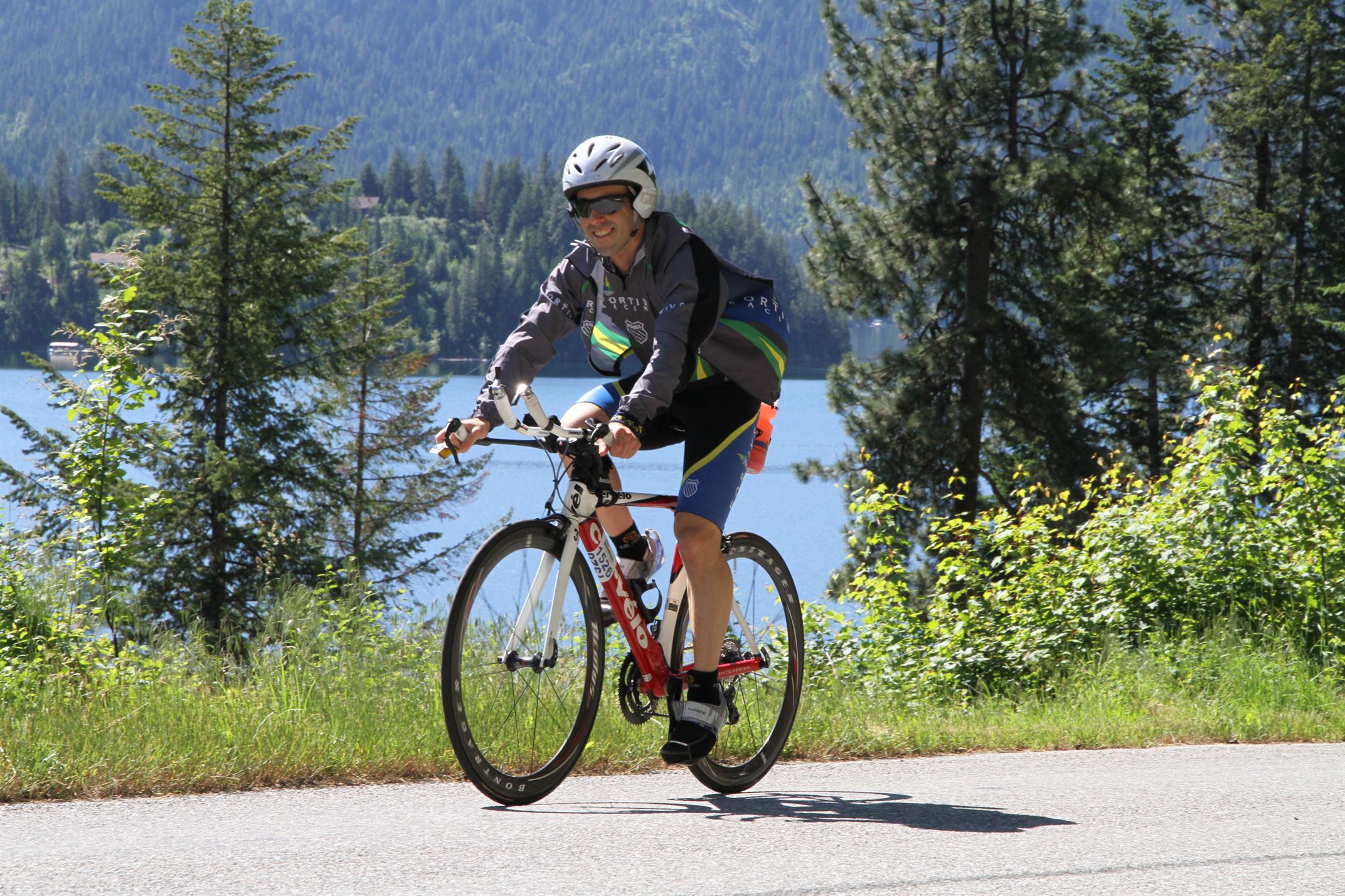IMAZ 2015 Race Report: All the Ways to Skin a Cat
/"There's a few ways we can skin that cat."
My coach, Brian Stover, said, texted or wrote this to me more often than he probably realized during the last five months. Usually because we needed to figure out how I was going to swim, bike and run at the appropriate volume while on a tight work and family schedule.
I'm not a fan of cats. They're too fussy and fickle. Plus, I'm highly allergic to them. But I became a fan of how Brian and I "skinned cats" to maintain the most delicate of balances between triathlon, career and home. All while being able to preserve enough energy to juggle everything without going crazy...mostly (right Seb?!).
In terms of training in 2015, there was B.A., Before Audra, and A.A., after. I made some pretty big changes to how I approached my training and racing once I became an IronDadMan, mostly out of necessity. Instead of a traditional race report from Ironman Arizona 2015, I think it may be more insightful for others if I share what I learned about those adjustments.
Besides, my race report would sound like a lot of other people's I've read the last few days. Something like:
Swim: "The rolling swim start felt weird, the buoys moved farther right from past years, why do my calves keep cramping (???) and I came out of the water pretty much when I expected I would, within seconds of the long end of my predicted time."
Yes, 63-degrees warrants a neoprene cap for me to stay warm. I apologize for nothing.
Bike: "'F-ing IMAZ.' That's what I kept saying to myself with a laugh while cycling. The weather reports predicted fine weather all day for weeks and it was too good to be true. I was cold and wet, but had no nutritional issues to report. I peed a ton and couldn't figure out why. Much to the chagrin of people behind me while peeing on the bike, the wind kept shifting throughout the course... Overall, I biked pretty much how I expected I would, within a minute of my predicted overall window. Took some risks in terms of increasing my watts over my target goal and it seemed to work fine at the time."
"It's raining. F*ck it!"
Run: "After an embarrassingly slow T2 due to being unable to feel my fingers, I started running and shocked myself with a much faster pace than expected. I decided to go with it because the pace seemed manageable and I was able to keep nutrition down. The rain didn't bother me...until it did (along with the mud) later in the race around mile 16. Managed a massive PR for an Ironman half marathon (1:39 by my watch) but couldn't hold the pace for the next 12 miles. Ran pretty much what I expected I would overall though, within a minute of my coach-predicted time. Glad I took the initial risk on the pacing instead of slowing down. Nothing ventured, nothing gained."
Anatomy of my marathon, part 1 (miles 1-9): "I feel AMAZING! Sub 7:30s?! Hell yes!"
Anatomy of my marathon part 2 (miles 10-15): "I feel less amazing, but functional!"
Anatomy of my marathon part 3 (miles 16-24): "I do not feel amazing.I would like to stop running now."
Anatomy of my marathon, part 4 (miles 24-26): "Dear Lord where is that finish line?!!?!"
As for the race result itself, I have very mixed feelings, which I'll share at the end.
So what worked and what didn't? First, here's what changed. After six years, I made a decision to switch coaches. I did so not because I was dissatisfied (I still heartily refer athletes to Fortius Coaching), but more because I felt like I needed a new voice and fresh perspective to shake up my training. That's exactly what I got. In short, my new coach (Stover) and I developed a plan that would involve more overall training volume, but spread more evenly throughout each week. That's triathlete-speak for essentially no rest days unless I was traveling on business or had a family obligation. Additionally, we dramatically increased my run frequency and volume to six or even seven days a week at 35-40-plus miles. I would estimate 95 percent of my workouts were entirely aerobic in intensity, meaning completed at a conversational pace and thus easier to recover from. This was a big change for me and took some time getting used to. We also went more than four months without a brick workout, and only scheduled two total. No track workouts either in the traditional oval sense. Taper changed too for me, shrinking from weeks to days. Five, in this case. Finally, we opted out of strength training workouts due to lack of time, replacing them occasionally with jump rope work after runs.
Also as part of my new lifestyle change (A.A.), I stopped trying to complete both daily workouts prior to leaving for work in the morning. There was no way that could work again. Instead, my wife and I would talk every day and more in-depth once every two weeks (before Brian sent my schedule over) about when I could fit in each workout without infringing upon family time. Cat skinning would ensue. I also reluctantly chose to suspend my early morning swims with Tower 26, much as I enjoyed and relied on the group along with the superb Gerry Rodrigues to improve my stroke. The added sleep was going to be critical to balancing all the moving aspects of my life. Fortunately, I found a terrific master's group, Golden Road Aquatics, 10 minutes from my office. GRA offered energetic lunchtime swims and that became critical to maintaining a higher overall training volume.
What Worked
Everything Brian implemented seemed to pay off. The near daily running at an aerobic pace made me a much more efficient runner. In fact, almost my entire IMAZ 2015 marathon (99% literally) was done in HR Zone 2 (moderate) effort even with a record 13.1 mile split that was near my Ironman 70.3 pace. What?! Again, that was without really doing any brick workouts, which saved me a ton of time on the homefront. The aerobic work also translated to the bike, where the vast majority of my effort was in that moderate zone too.
I also wised up as a triathlete, finally following every workout as it was prescribed. (This was largely my fault in the past as I often found myself caught up in other people's workouts instead of completing my own as written.) And since the vast majority of workouts were at a moderate level, it was much easier to complete them. I only missed two workouts in five months, and both came on the final day of my build prior to taper due to a horrendous night of sleep and an early morning doctor's appointment for Audra.
Spacing my daily workouts out by a few hours was also beneficial. Each workout became more of a quality session, though my swimming suffered since it almost always became the second workout of the day. It's much harder to swim on heavy legs following a run. Still, I think giving my body more time between workouts enabled me to complete more workouts at the specified level and duration.
Finally, printing my bi-weekly schedule and posting it on the kitchen wall was one thing that subtly helped me remain engaged in my training. Steph and I could see what was on the schedule and discuss any potential conflicts. Plus, I could cross off each completed workout, which served as positive reinforcement and motivation to keep my consecutive workouts finished streak intact.
Printing my training calendar helped my wife and I communicate daily on training regimen, along with how to manage family time and daddy duty.
What Didn't Work
My swimming took a big hit the last few months, and it's primarily because swim volume was cut by between a third and a half compared to last year. Swimming is by far my weakest discipline, and something I need to work extra hard on to improve. But Brian recommended we focus more on improving my run as being fitter across the board would help me overcome some of my swimming deficiencies. Brian already told me we'll be swimming a lot more this winter. Joy. I'd like to strangle that cat and then skin it with a dull blade.
Since I was running so much, I found it even harder to keep my weight up to what I'd consider a healthy level. It constantly felt like I was pushing a giant food rock up a hill each day only to watch it tumble back down. I'd lose up to four pounds and try to gain five, day in and day out. That lack of weight likely affected my bike power output, which is something I think needs more attention in the future. I think the chilly weather at IMAZ affected me a little more than other folks perhaps due to my inability to use stored fat to keep my core temperature warm.
Despite getting more sleep than people told me would be possible with a newborn, it still probably wasn't enough quality rest to help me fully recover each night. Waking up three to four times each night can't be considered a helpful workout recovery tool, but I don't think it affected me as much as I expected. I feel obligated to put "lack of sleep" in the "What Didn't Work" section but honestly...it could have been much worse (thanks to my awesome wife) and I don't think it affected me on race day when it mattered most.
10:25...Again!?
Three years, differing conditions, same result. Almost exactly. I trained more than I ever have before for an Ironman, improved my run, slightly improved my bike split and ultimately I came in at the same time I did when I was training with less volume but higher intensity. What does that mean? I made all these changes to take the next step in my evolution as an athlete. But did that happen? Percentage-wise, I fared better this year in my age group and overall than in 2013 (when conditions were more favorable). But I was worse compared to last year's results, when conditions were much windier on the bike and more favorable on the run.
Have I peaked as a triathlete? It's only going to get harder to find time to train now that Audra is growing rapidly, so finding more time to improve is probably out of the question. I honestly thought I could flirt with breaking 10 hours this year at IMAZ if the conditions were perfect and once again I was nowhere close. Is that goal a Quixotic dream? And Kona, which I thought could be a stretch goal I was closing in on, feels more distant than ever. A Legacy slot seems my best hope. Only five more years of Ironman races to go then! Hooray!
I'm not calling the Wahmbulance over this great injustice. I have no regrets about my training or the race itself. There were some big changes in my life that delivered a profound level of joy that is simply irreplaceable. That made those big training changes far easier to make. It's also important to note that April, May and June were largely a wash for me from a training standpoint due to illness, burnout, moving to a new home and of course, Audra's birth. So, Brian had to essentially build me up from scratch to where we wound up on race day. And to his credit, I arrived at Tempe Town Lake statistically in the best shape of my life. I'm reminding myself to stay positive and think what he and I can do together if we use this new fitness base to improve upon for Ironman Vineman next July.
During the race, I took calculated chances, and grew as a person and triathlete in the process. I dictated my race for a change, instead of simply managing the day based on what the weather gave me. That took confidence. I hope to take more chances in future races like Wildflower and Vineman, in fact. I liked the rush of not knowing whether they would pay off instead of simply going with the flow.
I won't resume formal training for a few more weeks. Body, mind, and soul need a triathlon break, and I simply want to snuggle up with my wife and baby in bed every morning without rushing out the door to train. My first race won't likely be until next May. That will give me plenty of time to think about the athlete I am, the athlete I want to be, and what the best path is to arrive at my ultimate desired destination without sacrificing what matters most: family.
I'm sure there will be several ways we can skin that cat.
"I am sooooooo happy that is over with. Let Week of Decadence begin!!!"
